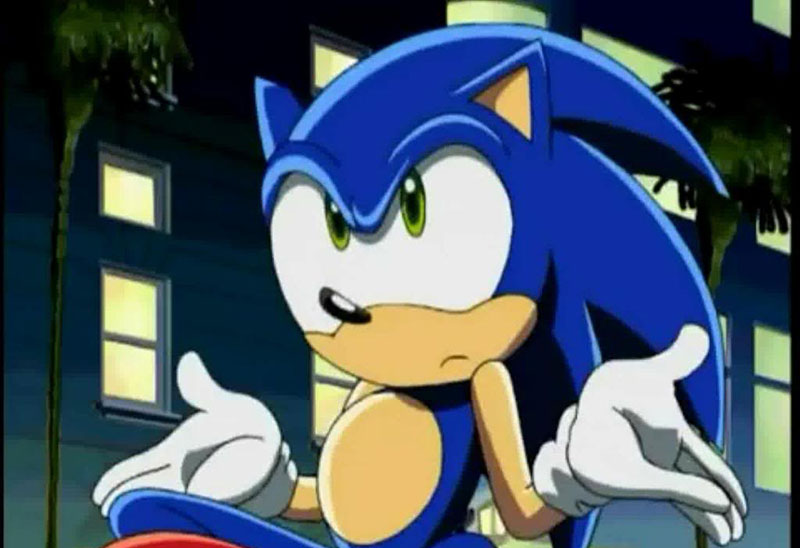
My Top 10 Games of “2016”
By Brian • 3 February 2017
Prepare yourselves for the sorriest “top 10 games of 2016” you’ll ever see, for two important reasons:
- We’re well into 2017. Nobody cares about 2016 anymore.
- None of the games on this list were actually released in the year 2016.
You see, I love video games, but I’m frugal (or cheap, depending on how polite you’re feelin’ today) and therefore typically a couple of years behind on tech. I almost never play current games. I remember an old PvP comic in which Cole is just getting around to buying Baldur’s Gate 2 quite some time after its release, and Brent and Francis make fun of him for being an old man. That’s me. That’s my life! But it’s okay. 2016 was a good year of gaming for me. I definitely didn’t get to play as much as I would have liked, but I had a good time when I had the chance.
The only caveats for games appearing on this list are that I either beat them or played the majority of them in the year 2016. So let’s get started.
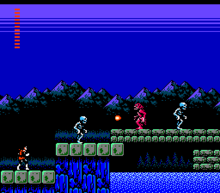
Honorable Mention: Castlevania 2: Simon’s Quest (NES, 1988)
Simon’s Quest is preceded by its internet reputation as a confusing, obtuse misadventure, full of poorly translated hints and townspeople who lie to your face. My advice? Get yourself a walkthrough and shine the Lens of Truth on all those bad hints, because if you can get past them, Simon’s Quest is a great game. It’s not my favorite game. It may not even be my favorite Castlevania game. But Simon’s Quest has a special place in my heart for a number of reasons. It was my first Castlevania game. It was also the first game I really dove into when we first got the internet and I was introduced to emulation. I played it over and over, learning all of its secrets and nuances, and consulted countless guides and walkthroughs on how different people approached it. It is a game I can pick up at any time, any place, in any mood, and sit down and enjoy and finish in an hour. I play it at least once a year, and I never get tired of it. I love taking on Dracula’s legions of skeletons. It is strangely therapeutic, more so than in any other Castlevania game. The game feeds you skeletons to whip like Grandma feeds you pies to eat, and who am I to say no to either? The music is good, too, and the exploration aspect of the game puts it over the top.
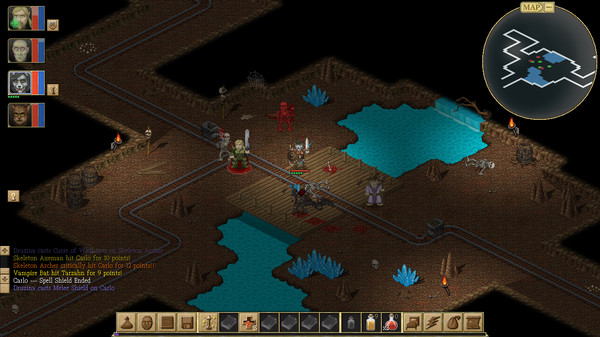
10. AntharioN (PC, 2015)
This was a mostly fun old school, isometric RPG in which your party of four customizable adventurers must dredge up the best sword in the game from a dungeon tucked away in some icy mountains to bring down the ultimate evil. The character customization, strategic combat, and dungeon-crawling elements are great, but the story left much to be desired, complete with a bunch of half-baked moral choices that didn’t seem to have any consequences one way or the other. The game ended with practically no fanfare or any indication that I was actually done. I guess when you do things right, people won’t be sure you’ve done anything at all. I did have a lot of fun playing it at first, but AntharioN ultimately proved to be a bit too long, a bit too repetitive, and the underwhelming ending meant a lot of hours spent with minimal payoff. I also had to play on easy mode because I was getting wrecked by basic enemies like crabs and seagulls on normal difficulty well into the early-midgame. When four non-level-1 adventurers with weapons, armor, and magic spells can’t beat four seagulls, there may be a balance issue.

9. Ducktales Remastered (PC, 2013)
The original Ducktales game made by Capcom for the NES in 1989 is already a classic, but playing Wayforward’s remake makes the experience almost like watching an episode of the Ducktales cartoon. Yeah, yeah, some of the jokes fall flat and some of the cutscenes drag on a little too long, but the superb voice-acting supplied by the original cast of the cartoon is a delight, particularly for fans who grew up with it. Plus, the cutscenes are skippable, so if you don’t like them, don’t watch them! Of course, the experience isn’t as pure as the original—remakes always add new levels and expand upon existing ones, but the love for the original is evident, and the updates don’t hamper the enjoyment of the remastered version. And yes, you can finally fulfill your childhood dream of swimming in the money bin.
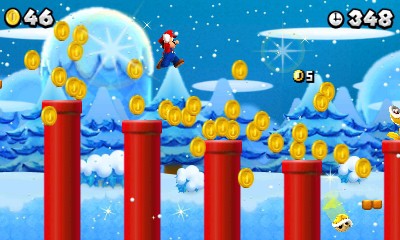
8. New Super Mario Bros. 2 (3DS, 2012)
This is the turning point in the Super Mario Bros. series in which Mario grows tired of rescuing Princess Peach and decides to get rich instead. I wrote about this game early last year, when I mentioned that I was surprised by how well New Super Mario Bros. 2 and its emphasis on coin-collecting held my attention. The coins are so meticulously and purposefully placed that it just feels wrong to leave any of them behind. In other Mario games, the primary purpose of collecting coins is to earn extra lives, but I’ve gotten good enough at Mario games that lives are rarely an issue. New Super Mario Bros. 2 has so many enticing coins that I built up hundreds of lives, yet I couldn’t stop collecting more and more coins. Playing the game was not only fun and relaxing, but also became an intriguing psychological study on how much of a risk I was willing to take for just a few more coins. A fresh, original take on the typical Mario formula.
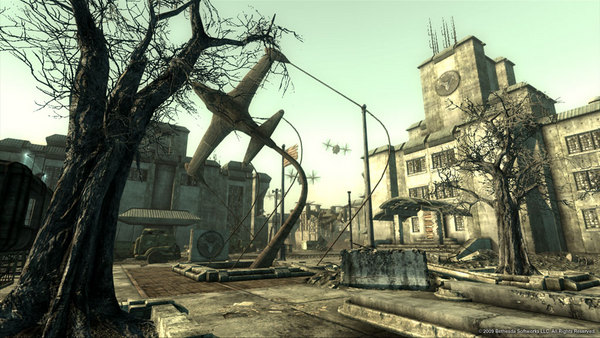
7. Fallout 3 (Xbox 360, 2008)
I wrote a brief blog about this last year, too, and about how I generally roleplay myself in games like this, but I think it worked out pretty well in Fallout 3, so I mustn’t be a complete waste of space in real life then, either, right?! As the game went on, I got a lot less thorough in my exploration, sticking more and more to my quests, rather than investigating every building or monument that turned up on the horizon. But, I think that’s a natural progression—the stronger and better-equipped I got, the less I needed to kill all the rats in every abandoned store and subway tunnel and sell drugs to wandering merchants. Trust me; I still found plenty of things to do. The overly long, gruesome deaths that accompany the V.A.T.S. combat system got awfully tedious after a while (because I’m not a MAN and can’t stand blood and guts haha lol k thx byeee), but other than that, I enjoyed Fallout 3 and my trek through the Capital Wasteland, especially when I got strong enough that I didn’t have to run like a coward from Super Mutants and Mirelurks. I felt pretty bad about some of the moral choices I made, even though I always tried to do the right thing instead of doing the easy thing, but I think the world turned out a lot better as a result.
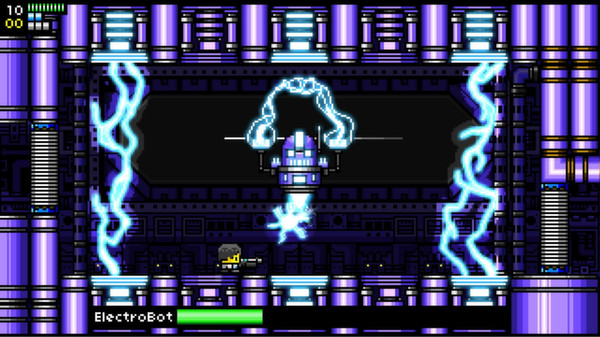
6. Rex Rocket (PC, 2014)
Rex Rocket is a fast-paced exploratory sidescroller aboard a spaceship overtaken by slime monsters and an artificial intelligence gone mad. The game relies heavily on jumping and platforming and finding key new abilities to progress, falling somewhere between Metroid and Mega Man as far as gameplay goes. I’d heard reports of absurd levels of difficulty that I dismissed when I started playing. That was until I got about two-thirds of the way through the game, when things went completely insane. How wrong I was. I started losing more lives in two minutes towards the end of the game than I did in the entire first half. Perfection of wall-jumping, double-jumping, teleporting, and a bevy of other movement-based abilities are essential to make it through the ship’s maze of spikes, slime pits, laser traps, and more. Likewise, defeating the bosses demands mastering pattern memorization—there is no powering through fights with the right weapons here, like you can get away with in Mega Man. It’s a tough game, but fair, and a lot of fun.

5. Soul Blazer (SNES, 1992)
This is the first installment of what’s called the “Heaven and Earth” trilogy, made up of three Super NES games developed by Quintet: Soul Blazer, Illusion of Gaia, and Terranigma. Amanda and I have the first two games, but Terranigma was never released in the U.S. The Heaven and Earth trilogy is somewhat obscure; I didn’t realize all these games were connected until sometime in the last few years when either Retronauts or my friend Jon told me about them, and I wasn’t even aware of the existence of Soul Blazer until I met Amanda, despite its reputation as one of the best action RPGs on the Super Nintendo. I didn’t get around to actually playing it until last year, even though Amanda insisted for years that I make time to do so. Too many games!
Now that the history lesson is out of the way, I’ll give it to you straight: this *is *a really cool overhead action RPG. You assume the role of a herald of God, who descends to Earth to restore a world decimated by an evil being called Deathtoll. As you defeat monsters, villages wiped out by Deathtoll rebuild themselves, and are repopulated as you free the souls of the citizens. The villagers then provide you with hints and items that help you get through the rest of the game. You go around liberating an entire empire from Deathtoll and go on to face the big guy, himself. There’s lots of equipment and magic to utilize, and some secrets, too! There’s a lot of Zelda influence in the gameplay, as well as some from Gauntlet, since the monsters spawn from generators scattered throughout the dungeons.
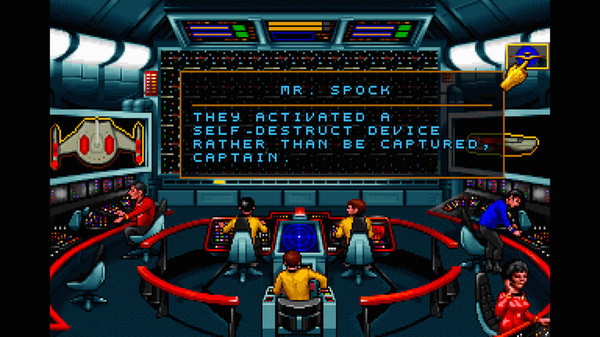
4. Star Trek: 25th Anniversary (PC, 1991)
It’s a point-and-click adventure game structured like a season of Star Trek, complete with voice-acting from the entire original cast! Even Chekhov! Amanda and I like to tag-team these adventure games, but even together, we needed a lot of help from the clue book to get through this one. It’s a fun game, and well structured, but some of the puzzles are too nuts for our feeble brains. However, in our defense, there are some pixel-perfect clicks that we just missed, too, so give us a break. Also keep in mind, this is an adventure game from the hardcore era, meaning that if you miss something early in a mission, you can find yourself in a no-win scenario and have to go back to the beginning.
So, yeah, it’s hard, but so much fun. It really captures the spirit of original Star Trek, too. Harry Mudd makes an appearance, the Klingons are always hanging out in the periphery ready to cause trouble, and you even meet the Aztec god Quetzalcoatl! We didn’t technically finish the game, though—the final space battle is too difficult! The Enterprise must square off against a fake Enterprise, along with two Elasi Pirate ships. (The Elasi Pirates are the well equipped, overarching villains of the game, causing trouble across the quadrant.) Unless you can wage a Kirk-esque fight and wipe out the fake Enterprise before the two Elasi ships join in, there’s not much hope of winning, and I was too bad at the clumsy space combat to ever pull it off. A great game, save for the last impossible battle.

3. Castle in the Darkness (PC, 2015)
Castle in the Darkness is Castlevania 2’s younger, shorter, fatter, less forgiving brother that uses a sword instead of a whip. There’s influence from plenty of other games from that era, including Zelda 2 and Faxanadu, but some of the locations and tilesets appear to be heavily inspired by Simon’s Quest, which is great. The variety of weapons, armor, and magic offer a surprising amount of customization, and some of the stuff you get early in the game maintains its usefulness throughout, which is always a nice touch—I like items to stay useful, rather than forgotten five minutes after acquiring them. The game isn’t perfect, though; it could stand to have an automap and less rooms full of spikes. I know it’s trying to be retro and hardcore, but I only have so much time to play games, and a map (and fewer stretches of five or six consecutive rooms full of spikes between save points) would have made my backtracking a lot easier. Still, it was great fun, it scratched the Metroidvania itch, the boss battles and platforming offer an inspired but fair challenge, and the soundtrack rocks.
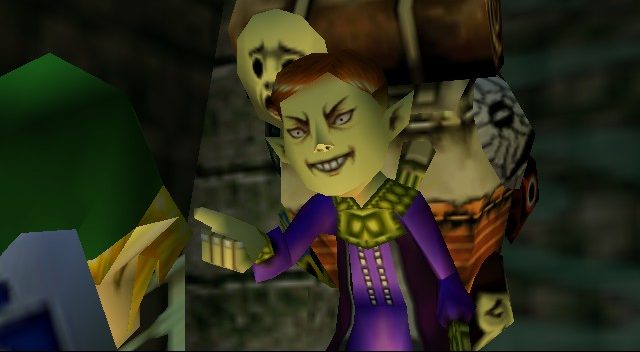
2. Legend of Zelda: Majora’s Mask (Nintendo 64, 2000)
I have a love-hate relationship with Nintendo 64 games in that they are generally great, but I can’t control them. Luckily, I got to play Majora’s Mask on the Gamecube Zelda Collector’s Edition disc, which surely saved the life of at least one Nintendo 64 controller.
I liked Majora’s Mask a lot because of its attention to detail. Everybody in this game keeps a schedule. And not only that, if they need to be at a certain place at a certain time, they actually walk there. Nintendo could have taken a shortcut and just used some trigger to make them automatically appear at the new location at the designated time, but no. You can follow them around, and they’ll go about their day just like you would. It’s extraordinary!
It took me some time to fully grasp how the time travel aspect of Majora’s Mask works, and how everything other than the important items in your inventory resets if you go back to the dawn of the first day. I missed some item in the swamp my first time through, and I was like, “Oh, no big deal, I can just go back and get it really quick.” Amanda was quick to point out, “No, it’s the start of the first day. You’d have to beat the boss again to do that.” WHAT. It wasn’t difficult to understand, but it was tough to comprehend and remember what I had and hadn’t done, and how that would or would not impact the next 3-day cycle.
There’s an overwhelming sense of hopelessness around everything in this game. The world ends in three days, and you can’t do everything you need to in those three days to save it. Your only chance to save the world is to re-live those same three days over and over again, and watch it come to a horrifying end again and again, only to make small gains here and there. If you do it enough times, you can finally set enough things right to see it teeter on the brink of destruction one last time, and then bring it all together and *finally *save it. It’s hopeless at first, but it’s really beautiful at the same time because, since no individual act in Majora’s Mask can save the world, you have to do a lot of little things and help a lot of people, and start a chain reaction, and in time, all of those good little deeds add up to something that benefits everybody. It’s a lot of hard work, but it’s worth it! I feel like there’s some sort of allegory here. Nah, surely not.
Anyway, it’s very different from any other Zelda game that I’ve played, but it also had a tremendous and delightful emotional impact on me that I wasn’t expecting. I really cared.
The Water Temple in Majora’s Mask sucks a lot more than the Water Temple in Ocarina of Time, though.

1. Shovel Knight (PC, 2014)
By name alone, it sounds like the dumbest thing in the world: a knight with a shovel. In reality, it is one of the best retro-inspired games available today, if not the best. Shovel Knight seamlessly pairs the retro aesthetic with modern game mechanics. Many developers will make a retro game and purposely try to make it “just like” old games, complete with no automap, no saving, or intentionally cheap level design or enemy placement, all in the spirit of making it as hard as the NES games from your childhood. That’s fine, and I’m sure there’s an audience for it, but it’s not my thing anymore. Like I said about Castle in the Darkness, I only have so much time to play games, and while I do want a challenge, I’m more interested in a fun gameplay experience than artificial padding or handicaps that makes the game harder than it really should be. (Although, if you want a truly hardcore challenge, I recommend Shovel Knight in New Game Plus mode. Yikes.)
Shovel Knight is sidescrolling bliss. It looks and plays like a late-era NES game, but has none of the unwarranted frustration. It draws inspiration from the right places (Mega Man, Ducktales, Super Mario Bros. 3, etc.) and incorporates the theme of each level into the platforming challenges about as well as I’ve ever seen. The best example I can think of is in Propeller Knight’s stage, in which there are sequences where the wind blows in different directions, and you have to position yourself in the right places at the right times to both advance through the level and avoid being blown off of it. It’s hard, but the game eases you into the most challenging parts of each level, teaching you along the way. I died a lot, but each death left me with the thought of, “Oh, I see what I did wrong here,” as opposed to, “I can’t do this.” You get lots of clever subweapons like a throwing anchor, for example, as opposed to the more traditional throwing axe, or the mobile gear, which helps you traverse spikes, but can also be used to roll over enemies. You can buy different sets of armor, each with its own benefit and drawback, such as the Conjurer’s Coat, which offers less protection, but increases your magic power. The enemies are all kind of silly (they call themselves the Order of No Quarter, which is equally absurd and intimidating), but mustn’t be taken lightly. And then, of course, there’s your main weapon, the shovel, which is far more versatile than you’d ever expect.
It’s great. I don’t know what else to say about it. 10 shovels out of 10. It gets bonus points for a soundtrack worth buying on its own (I did), a great sense of humor, and because I first played it when I was sick with strep throat and it made me feel a lot better on an otherwise glum day.